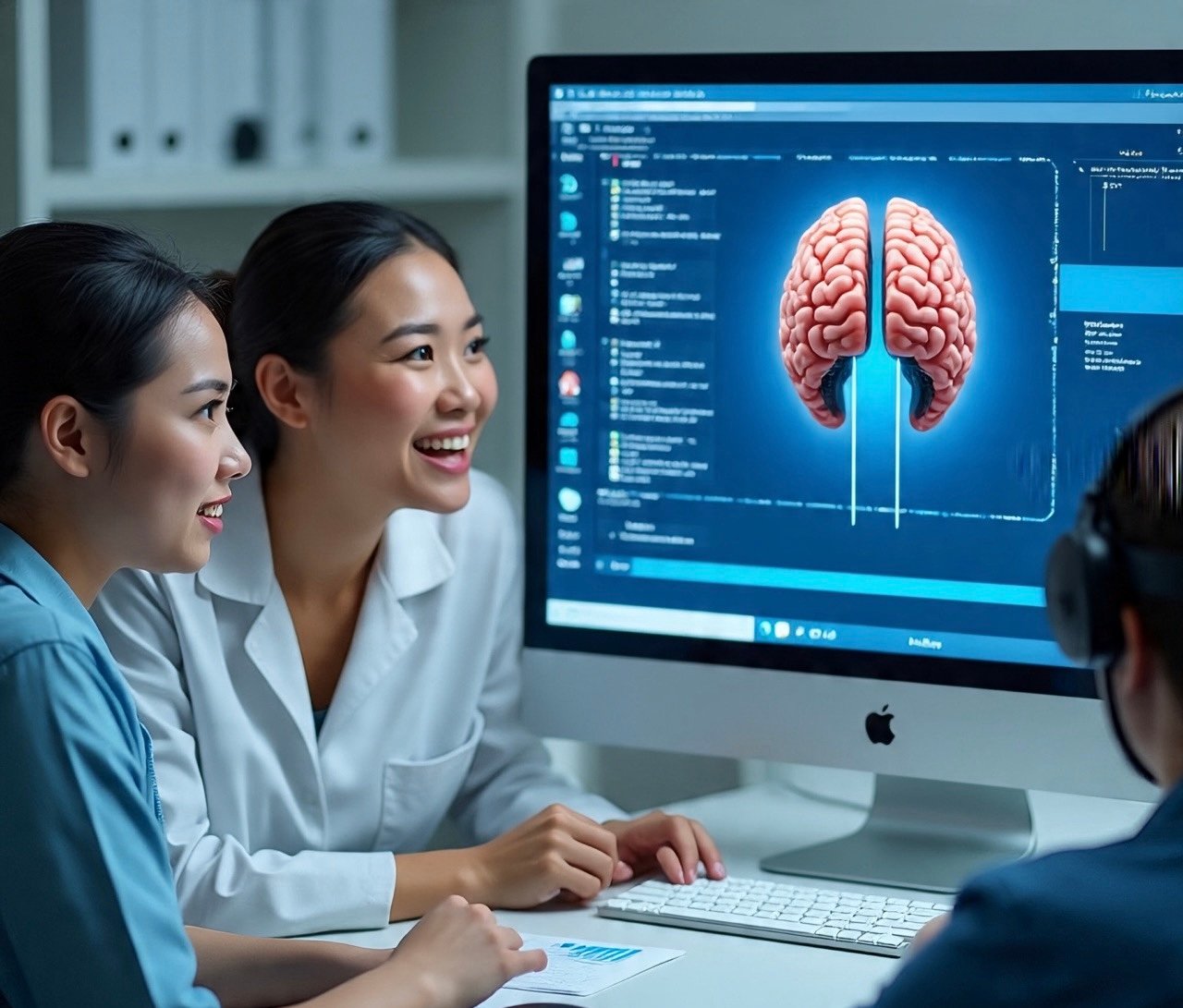Scientists are achieving remarkable progress in brain-computer interface (BCI) technology, unveiling a system that translates inner thoughts directly into text or speech. This innovation offers new hope for people with paralysis or severe speech impairments, potentially transforming how they communicate with the world.
How Does the Inner Speech Decoder Work?
Researchers tested the BCI system on four volunteers with paralysis. Impressively, it achieved up to 74 percent accuracy in decoding imagined speech. Unlike older systems that relied on attempted movements, this technology interprets inner speech signals—allowing users to think about words without physically trying to speak.
Neuroscientist Benyamin Meschede-Krasa from Stanford University explained:
“If you just have to think about speech instead of actually trying to speak, it’s potentially easier and faster for people.”
Decoding Thoughts Through the Motor Cortex
The breakthrough comes from an implant placed in the motor cortex, the brain region responsible for movements, including speech. It detects unique neural activity linked to phonemes, the smallest units of speech. These signals are then combined by advanced machine learning algorithms to form words and sentences.
Although some overlap exists between brain signals for attempted and imagined speech, the system successfully distinguished and decoded them with meaningful accuracy.
Key Achievements and Limitations
- Recognized up to 125,000 words using inner speech decoding.
- Achieved maximum accuracy of 74 percent, though results varied between participants.
- Still limited by implant precision and the need for broader brain mapping.
Neuroscientist Frank Willett noted:
“We found that we could decode these signals well enough to demonstrate proof of principle, although still not as well as with attempted speech.”
Safeguarding Privacy in Thought Decoding
Because thoughts are deeply personal, decoding inner speech raises valid privacy concerns. To address this, researchers implemented a mental password system. Users must activate decoding intentionally, which prevents unintended translation of private thoughts with 98 percent reliability.
Future Directions for Brain-Computer Interfaces
Researchers are confident about improving the technology with:
- Upgraded neural implants that capture more detailed brain signals.
- Broader brain mapping to enhance decoding accuracy.
- Integration with assistive devices, allowing natural and fluent conversation-like communication.
According to Willett:
“This work gives real hope that speech BCIs can one day restore communication that is as fluent, natural, and comfortable as conversational speech.”
Broader Implications for Communication
This breakthrough represents a major milestone for assistive technologies. By combining neural implants with AI-driven machine learning, inner speech BCIs may empower individuals with disabilities to communicate seamlessly, enhancing both independence and quality of life.
While challenges remain—such as improving accuracy, refining implants, and addressing privacy—scientists believe inner speech decoding could soon reshape the future of human communication.
FAQs
Q: What is an inner speech decoder?
A: It is a brain-computer interface that interprets inner thoughts as words or sentences, converting them into text or audible speech.
Q: Who could benefit from this technology?
A: Individuals with paralysis, motor disabilities, or severe speech impairments could use BCIs to communicate naturally and effectively.
Q: How accurate is the current system?
A: The maximum decoding accuracy reached 74 percent, though performance varies depending on the user and test conditions.
Q: Are there privacy concerns with inner speech BCIs?
A: Yes. However, safeguards like mental passwords are being developed to ensure users remain in full control of their communication.
Q: What’s next for BCI technology?
A: Future improvements include better implants, broader neural mapping, and integration with assistive devices for smoother, natural communication.




